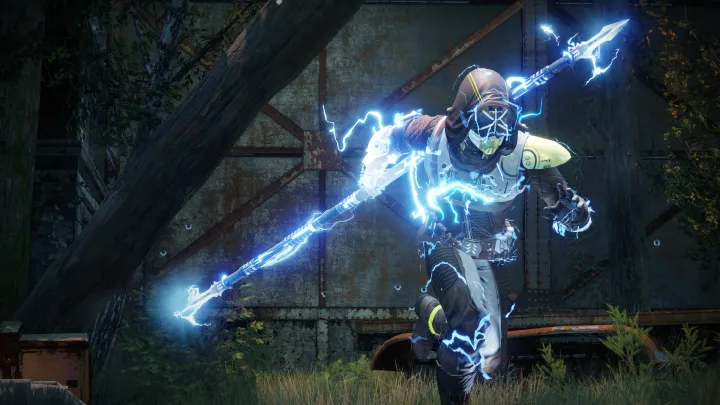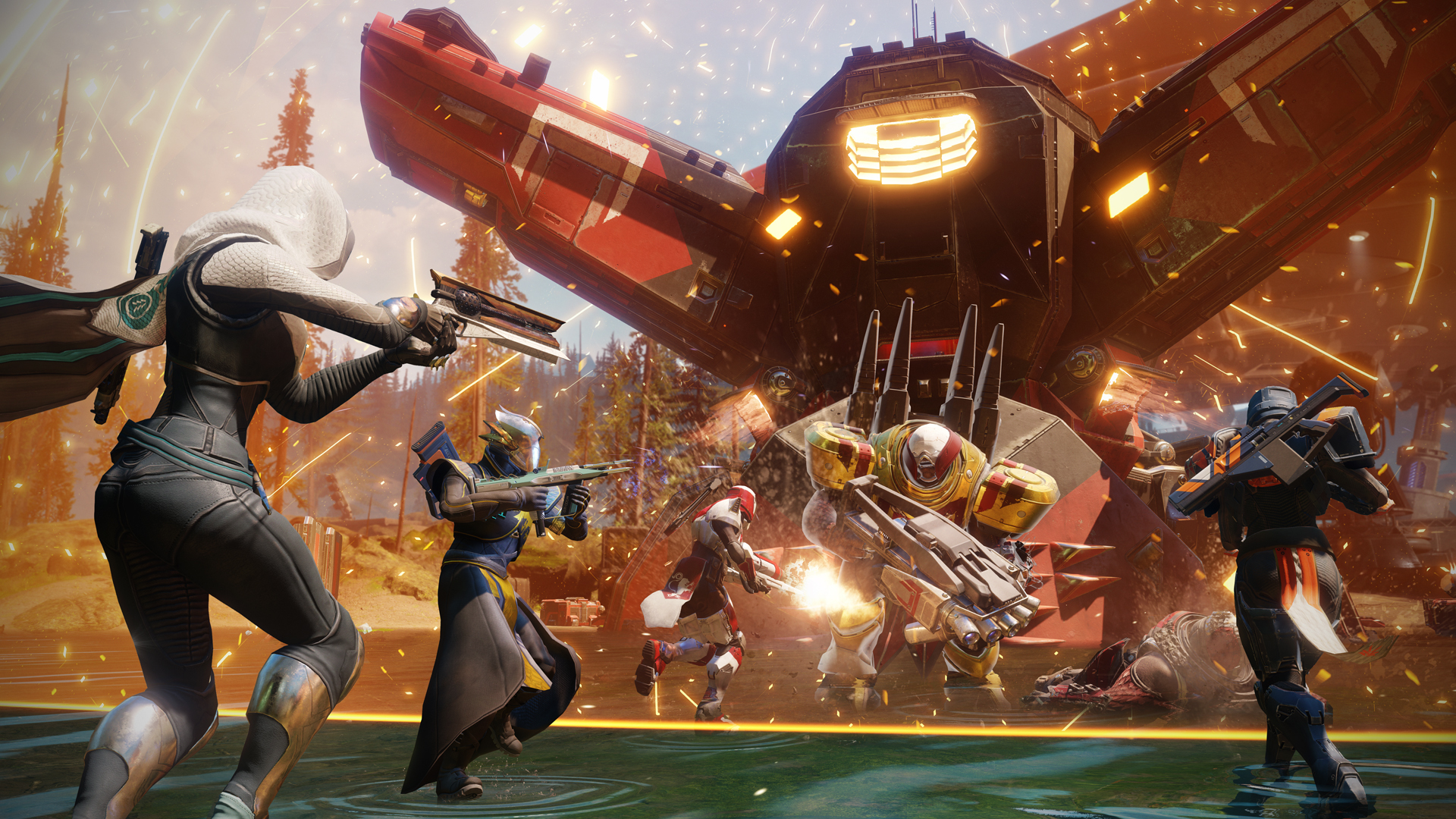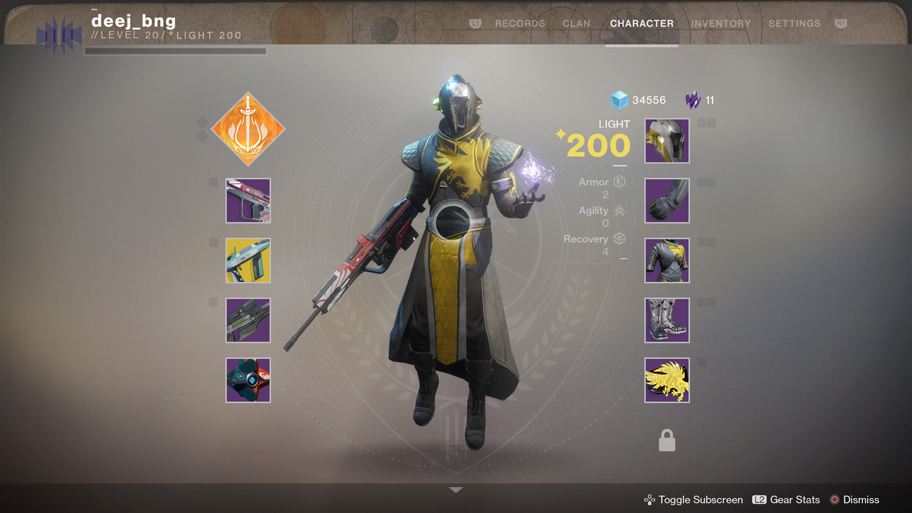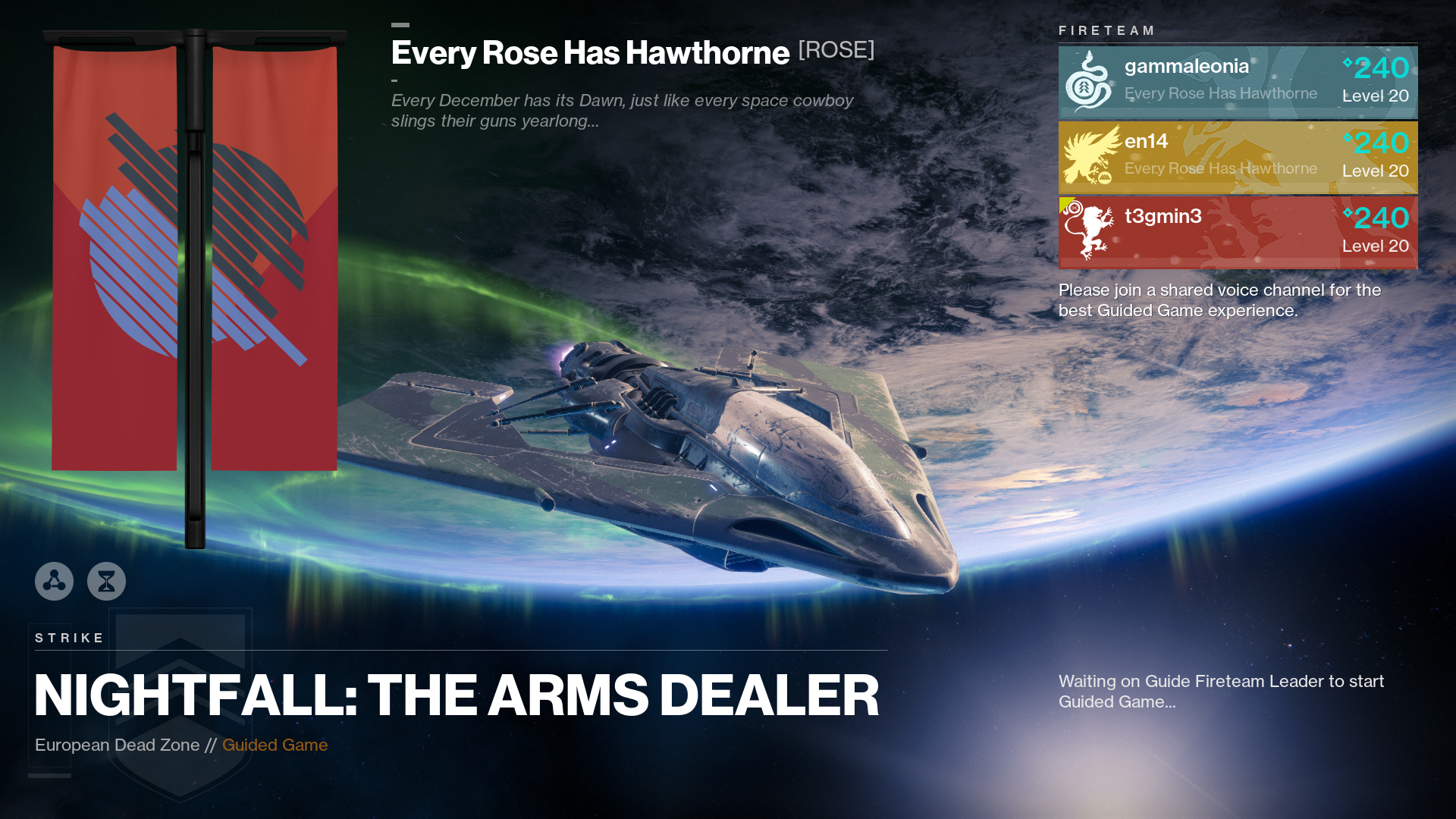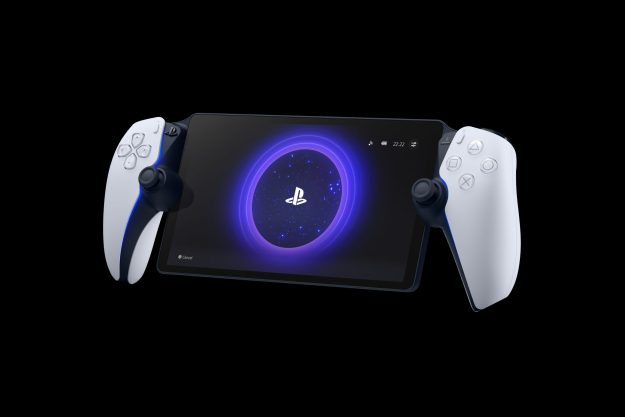
“Smarter and more streamlined, “Destiny 2” is the version of “Destiny” fans have been waiting for.”
- Varied missions and lots to do
- Clan system incentivizes playing with pals
- A fun, over-the-top story
- Improves on mechanics from Destiny in almost every way
- Another great raid gives a good reason to keep leveling up
- Story will be hard to keep track of for new players
- Endgame progression is still opaque and confusing
- More raid ideas could stand to be included in other content
Destiny has come a long way. Developer Bungie’s massively online first-person shooter was fun, but launched with a host of unforeseen consequences from trying to fuse the World of Warcraft formula and fast-paced console gunplay. Over four major expansions, Bungie continually learned lessons and made changes that improved that situation on every front, from its loot grind to its storytelling. In preparing our Destiny 2 review, the sequel has shown itself to be the culmination of all that experience.
The sequel to Bungie’s “persistent-world shooter” isn’t without its problems. It releases a ton of new content, it feels more like an expansion of the original game than a true sequel. Despite some quibbles along the way, though, Destiny 2 is a vast improvement over the game Bungie released in 2014. It’s a far more complete experience, and the best version of Bungie’s idea in Destiny we’ve played yet.
Starting fresh
Destiny 2, like its predecessor, takes place in the distant future, when a conglomerate of alien armies have invaded the solar system and threaten the last vestiges of humanity, which are holed up in a walled stronghold called the Last City.
At the game’s outset, a new faction from one of those forces, known as the Red Legion, launches a sneak attack on the City, wrecks its defenses, and defeats its defenders — The Guardians, the gun-toting group of superheroes made up of the game’s players. The Legion, led by the towering alien emperor Dominus Ghaul, saps the power of the Traveler, the giant robotic orb whose “light” revives Guardians when they die in combat.
Suddenly mortal, humanity’s army is scattered to the wind. As one of the survivors, your Guardian must find a way to get your power back, and mount a counter-offensive against Ghaul, with numerous, alien-blasting detours along the way.
Destiny’s story was a famously convoluted mess, with lots of key lore material accessible only through “Grimoire Cards,” housed on Bungie.net and not in the actual game. The Destiny 2 plot isn’t too much better. You still spend most of your time on a series of cleanup missions tangentially related to the main story, with the occasional cutscene tying Ghaul and the game’s main threat back into the campaign.
At the same time, the game excels in leveraging its characters, such as Destiny mainstays Zavala, Cayde-6 and Ikora, to make your various missions more interesting and enjoyable. Even if the plot still suffers, the moment-to-moment experience is often funny and lighthearted in a way that makes it enjoyable to hang out in Bungie’s vast, weird future.
Destiny, but smoother
It’s hard to judge Destiny 2 without looking back at its predecessor. The original Destiny was thin on content from its start, especially in its post-story endgame, and that story itself tough to parse or only accessible through Grimoire Cards, making it tough for players to really connect with the game world on a deep level.
Destiny 2 takes all the best ideas from Destiny and repackages them in a game that’s a little easier to follow and a lot more fun to work through. There’s more variety in the missions and activities (though everything still boils down to shooting every alien that crosses your path). New, better-curated missions called “adventures” and “quests” fill out the game with activities that start out simply and pick up in intensity, often including bosses and interesting challenges.
This is the most fun Destiny has ever been.
Players will find tons to keep them busy, from the story, adventures, and quests, to competitive multiplayer in the “Crucible” and the return of three-person “Strikes.” Bungie has designed some cool missions that don’t just take you through a series of alien-filled rooms that lead to a big bullet sponge of a boss fight. Each mission pushes you to raid enemy encampments, defend positions, drive vehicles, and explore for secrets. Strikes do have a tendency to get old in a hurry, since there aren’t all that many in the rotation even after two expansions, but for the most part, the content is fun to play and to occasionally revisit.
The lightheartedness in Destiny 2 helps elevate a lot of those missions. Much of the dialogue in the game is straight-up comedy, which makes playing (and replaying) missions fun and breezy. This is Destiny but without all the seriousness. It often gives tongue-in-cheek reverence to the weirdness of its space fantasy, while learning from the mistakes of over-emphasizing the confusing stuff. The result is a more human, more character-driven experience.
(Mostly) a big improvement
The biggest frustration with the first Destiny was reaching its endgame, the point at which players finished the main story, and looked for more to keep them busy. The main goal of the endgame in both Destiny games is chasing better and better weapons and armor to make your Guardian more powerful, getting them ready for the game’s toughest (and, in Destiny’s case, best) content, its six-player raid missions.
Completing timed Public Events and tracking down tough-to-earn, top-level weapons can send players down small rabbit holes, giving them valuable sub-goals on the road to the raid. Many missions don’t even unlock until after the story is completed, but even heading back to previous planets to complete earlier side missions helps players advance their characters in a significant way for quite a while.
The grind slows down as you start to approach the peak level of raid-readiness, where gear levels off and the game starts to become opaque in its explanations of how to advance.
Destiny 2 takes all the best ideas from Destiny and repackages them in a game that’s a lot more fun to work through.
It’ll take most players longer to get to that point than last time thanks to a lengthier and more involved story campaign, and the journey is a much more enjoyable one because of greater variety in the missions. Bungie clearly learned quite a bit from creating things like Destiny’s raids, and those lessons and good ideas make their way into much more of Destiny 2 than they did in its predecessor.
The first raid in Destiny 2, called “Leviathan,” didn’tdisappoint. The previous six-player events were the best-designed content in the series, requiring players to coordinate and choreograph their actions in order to be successful. Leviathan does the same, and is filled with well-designed battles that are tough mostly because they require every player to work together in individual roles to the benefit of the team. The intensity of the coordination required of players is really unlike anything else on the shooter market, and it makes all that work to reach raid-readiness worth it.
Unlike with some previous expansions, Bungie hasn’t released additional raids in either Curse of Osiris or Warmind, the add-on content packs it has dropped in the first year since Destiny 2‘s release. But it did add “raid lairs,” which are shorter six-player missions — like raids, but less intense. Though the raid lairs aren’t quite as expansive or cool as their bigger counterparts, they’re a nice change of pace. Leviathan and the original Destiny raids are extremely involved, requiring hours and hours of play to complete, while experienced teams of six can knock out a raid lair in an hour or less. It’s a good adjustment to the formula, since even just scheduling a raid is a challenge unto itself.
If there’s a criticism of Leviathan and the raid lairs, it’s that, like other Destiny raids, they feel fairly out-of-step with the rest of Destiny 2. The sequel spreads more inventive, varied content throughout the rest of the game, but it’s still like nothing what’s in the raid content — for all intents and purposes, they’re a separate game. They’re a great, worthy addition to the overall Destiny 2 package, but the whole game would be better if the raid and raid lairs’ mysterious secrets, complex battles, and design variations propagated into a bigger portion of the main game.
And some of Destiny 2’s systems remain as inscrutable as its predecessor’s. Many of the game’s interface issues have been smoothed out, but there some awkward situations still arise. For instance, you have to constantly open the map or interrupt combat to check your several objective trackers. Just how you advance to the peak of the endgame isn’t exactly clear, and as Bungie has made changes with expansions, it has remained fairly opaque. And it’s easy to handicap yourself if you don’t wait to complete “milestones,” the objectives that hand out the best gear, until after you’ve completed everything else.
Growing pains

As with Destiny before it, Bungie wants Destiny 2 to maintain its popularity for the long haul, using paid expansions and free content updates to keep players coming back. The game’s first year hasn’t been completely smooth, however, with players complaining about various aspects of the progression system and Bungie trying to work out the kinks along the way.
Though the developer has made serious strides in that regard since the days of the original Destiny, it’s clear that the process of improvement is still difficult. The first expansion for Destiny 2, Curse of Osiris, feels like a page right out of the original Destiny handbook, with short and repetitive design across its campaign, adventures, and new Strike missions.
Things were improved somewhat with the second expansion, Destiny 2: Warmind, which brought in more new content and avoided the Curse of Osiris mistake of making new Strikes and other missions basically carbon-copies of what was in the story, and the story itself a series of largely identical missions in a new content area called the Infinite Forest.
Warmind is full of secrets — enough at least to keep players busy for the first month or two after it came out — and does a better job of mixing in new weapons to chase and content to complete. It also has a new hoard-based mode that gives players something new to strive for in the endgame, which was a welcome addition.
Overall, though, while Warmind was a step up from Curse of Osiris, it didn’t really rise to the heights of the main game. Players are now stuck waiting for Destiny 2‘s big Year 2 expansion, Forsaken, which drops in September and looks to rework a huge amount in terms of how the endgame will keep players engaged with Bungie’s world.
Outside of the expansions, Bungie has introduced several mechanic tweaks to its progression to make daily play more beneficial to players. These include unique rewards for Nightfall strikes, improvements to the modifications system, and “exotic masterwork” weapons. New and rotating multiplayer modes, such as the six-on-six Iron Banner and private matches, keep things fresh for competitive players.
Our Take
It took years for Destiny to find its stride and overcome the love-hate relationship players developed with it, and the culmination of that journey is Destiny 2. There’s still room for improvement, but exploring the solar system with friend and killing thousands of aliens has never been such a good time.
Is there a better alternative?
Destiny set a standard for massively multiplayer console shooters that other games tried to emulate, and Destiny 2 raises that bar significantly. Few games offer the same experience. Warframe, the free-to-play hit, is probably closest — however, it’s a third-person, free-to-play game that focuses less on quality shooting, but more on movement and killer ability combos.
How long will it last?
With its current crop of content, Destiny 2 will keep most players busy for around 10 hours with just its main story, and can double that or more with the rest of its content as players work toward the endgame. Then there’s the raid, which is some of the best team-based shooter gaming content on the market, as well as two raid lairs.
Destiny received fairly regular content updates for three years after its release, and we expect Bungie to continue updating Destiny 2 with more content, both free and paid, for years as well.
Should you buy it?
Fans of Destiny already have, but for shooter fans wondering what all the fuss has been about, Destiny 2 is absolutely worth trying. Most of the frustrations of the original have been ironed out, making for a multiplayer shooter experience that’s a lot of fun even if you aren’t a die-hard player.
Updated to reflect changes introduced since the launch of Warmind.
Editors' Recommendations
- The best skills to buy first in Another Crab’s Treasure
- Best video game deals: PlayStation 5, Xbox S and X, Nintendo Switch
- The most common PSVR 2 problems and how to fix them
- The best cozy games
- PlayStation trophies are finally coming to PC with new overlay



